You are here
Science Communication Material
NASA's Earth Observing System provides a variety of materials available for download. Feel free to choose a category below:
- Brochures
- Postcards
- Posters
- Science Writers’ Guide
- Mission Brochures
- Fact Sheets
- Calendars
- Booklets
- Lithographs
- Reference and Data Products Handbooks
- iBooks
- Activities
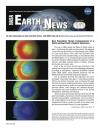 |
NASA Earth News Summary Spring NASA Earth News is a 2-page summary of some of the latest features about Earth science at NASA. 'NASA Earth News' is published quarterly and can be downloaded here in a printable format. This publication appears in: |
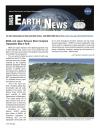 |
NASA Earth News Summary Summer NASA Earth News is a 2-page summary of some of the latest features about Earth science at NASA. ‘NASA Earth News’ is published quarterly and can be downloaded here in a printable format. This publication appears in: |
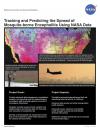 |
Tracking and Predicting the Spread of Mosquito-borne Encephalitis Using NASA Data Mosquitoes obtain encephalitis virus from infected birds and pass it on to humans. This lithograph explains how NASA is working to provide decision makers on the front lines of public health with innovative technologies and satellite data that are tailored into useful tools for combating this deadly disease. This publication appears in: |
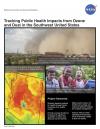 |
Tracking Public Health Impacts from Ozone and Dust in the Southwest U.S. Many airborne contaminants exacerbate existing health problems, increase health care costs, and reduce a person’s ability to work. The Environmental Public Health Application Systems (ENPHASYS) project bridges individual and community health by forecasting atmospheric ozone, dust, and other aerosols that trigger asthmatic responses or myocardial infarction (MI). This lithograph discusses how NASA satellite data is assimilated into the Community Multiscale Air Quality Modeling System (CMAQ) and Dust REgional Atmospheric Model (DREAM) models to produce ozone, aerosol, and dust forecasts that can be used to generate relevant health-related information. This publication appears in: |
 |
2008 NASA Science Mission Directorate Calendar |
 |
Ocean Surface Topography Mission/Jason-2 The Ocean Surface Topography Mission (OSTM)/Jason-2 spacecraft advances our understanding of ocean circulation and will improve our ability to forecast climate events and measure global sea-level change. The instruments on board are designed to map ocean surface topography to provide information on ocean wave heights, sea surface topography, tides, and water vapor. OSTM/Jason-2 continues the tasks of the Jason-1 mission. This is related to the following mission(s): This publication appears in: |
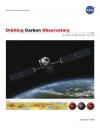 |
Orbiting Carbon Observatory The Orbiting Carbon Observatory is the latest mission in NASA’s ongoing study of the global carbon cycle. It is the first spacecraft dedicated to studying atmospheric carbon dioxide, the most significant human-produced greenhouse gas and the principal human-produced driver of climate change. This is related to the following mission(s): This publication appears in: |
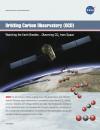 |
Orbiting Carbon Observatory (OCO) The Orbiting Carbon Observatory (OCO) is a new mission in NASA’s ongoing study of the global carbon cycle. OCO will make the first space-based measurements of atmospheric carbon dioxide (CO2) with the precision, resolution, and coverage needed to accurately map the geographic distribution of CO2 sources and sinks. This information will be used to improve our understanding of the processes that control atmospheric concentrations of this potent greenhouse gas and will lead to improved predictions of future climate. This is related to the following mission(s): This publication appears in: |
 |
2007 NASA Science Mission Directorate Calendar |
 |
Observing Air Quality from Space Compare three major air pollutants, their sources, and how they were distributed across the globe in 2005: nitrogen dioxide, tropospheric ozone, and particulate matter. This publication appears in: |
